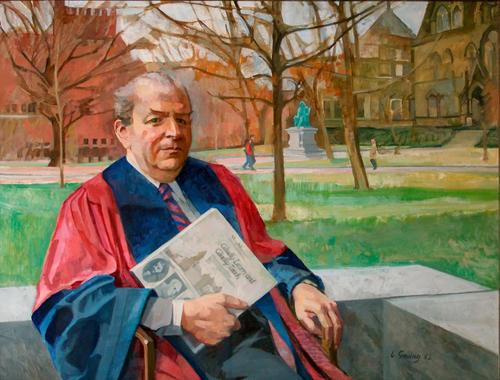Martin Meyerson
President (1970-1981)
Born 1922 in New York, New York
Died 2007 in Philadelphia, Pennsylvania
B.A., Columbia University, 1942
Master of City Planning, Harvard University, 1949
Hon. LL.D., University of Pennsylvania, 1970
-
Staff, Philadelphia City Planning Commission, 1944-1945
-
Assistant Professor in the College and Graduate School of Social Sciences, University of Chicago, 1948-1952
-
Associate Professor, Graduate School of Fine Arts, University of Pennsylvania, 1952-1956
-
Professor of City and Regional Planning, Graduate School of Fine Arts, University of Pennsylvania, 1956-1957
-
Professor of City Planning and Urban Research, Harvard University, 1957-1963
-
Acting Dean, Graduate School of Design, Harvard University, 1963
-
Professor of Urban Development and Dean, College of Environmental Design, University of California at Berkeley, 1963-1966
-
Acting Chancellor, University of California at Berkeley, 1965
-
President and Professor of Public Policy, State University of New York at Buffalo, 1966-1970
-
Author (with E.C. Banfield), Politics, Planning and the Public Interest (1955)
-
Author, Housing, People and Cities (1962)
-
Author, Face of the Metropolis (1963)
-
Author, Boston: The Job Ahead (1966)
-
Director, MIT-Harvard Joint Center for Urban Studies, 1959-1963
-
President Emeritus, University of Pennsylvania, 1981 to the present

University history during the Meyerson administration
1972 |
Penn formally adopted an affirmative action program for women and minorities. |
1972 |
John Robert Schrieffer, Professor of Physics, awarded the Nobel Prize in Physics. He was Penn's first current faculty member to win a Nobel. |
1974 |
The School of Arts and Sciences established by the merger of the College, the College of Liberal Arts, the Graduate School of Arts and Sciences, and the faculty of four social science departments – Economics, Political Science, Regional Science, and Sociology – formerly within the Wharton School. |
1975 |
Program for the Eighties launched. |
Penn Presidents
Biographical sketches of Penn Presidents (including Interim Presidents) and historically significant aspects of University history during each administration.